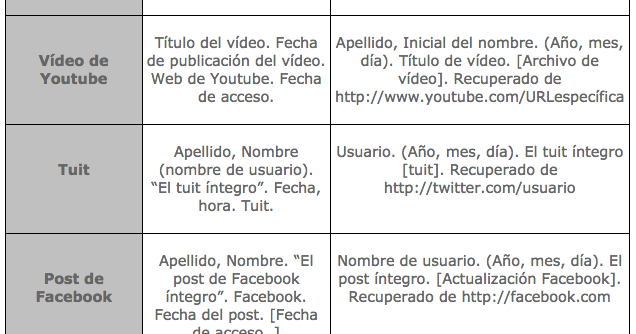
Effective Ways to Remove Paid Collections from Your Credit Report in 2025
Navigating the complexities of credit scores and reports can be challenging, especially if you have paid collections listed on your record. Understanding how to remove paid collections from your credit report is essential for achieving a healthier financial status and improving your overall credit score. In this article, we'll explore effective methods for deleting collection accounts, strategies for engaging with collection agencies, and the importance of credit report monitoring in 2025.
Understanding the Impact of Paid Collections
Before diving into the removal process, it's crucial to understand how paid collections affect your credit score. Generally, when a debt is collected by a third-party agency, it can stay on your **credit report** for up to seven years, regardless of whether you pay it off. This long-term impact can hinder your ability to secure loans or lines of credit at favorable rates. In 2025, lenders are increasingly relying on credit scores to make lending decisions, making it vital to take steps to improve credit score through appropriate credit report cleanup.
How Paid Collections Affect Your Credit Score
The presence of paid collections on your credit report signals to potential lenders that you previously had trouble managing debts, affecting your creditworthiness. According to recent statistics, having collections listed may reduce your score by significant points, although the exact impact varies depending on your overall credit history. Continued monitoring of your report can ensure that errors do not further deteriorate your score, which is tied to your financial health and ability to obtain loans.
The Role of Credit Reporting Errors
Sometimes, inaccuracies can exist within your credit report that unwarrantedly extend the implications of collections. Errors might include incorrect balances, misreported payment statuses, or the listing of paid accounts as unpaid. Utilizing the Fair Credit Reporting Act, you can challenge these inaccuracies and work on correcting them, providing an effective strategy for enhancing your credit report and removing negative items.
Strategies for Collection Removal
Removing paid collections hinges on employing effective **collection removal strategies**. There are several steps you can take, including negotiating directly with collectors, understanding your legal rights, and accurately documenting your communications. By developing a structured approach, you can increase your chances of successfully removing collections from your credit report.
Negotiating with Collectors
When handling collections, one key strategy is to engage in negotiations with collection agencies. Start by contacting your collectors and discussing potential removal options in exchange for payment or settlement agreements. Many agencies may be willing to remove the account from your report upon receiving payment—this is effective as long as you get any agreements documented in writing to protect against discrepancies.
Writing Goodwill Letters
The power of a **goodwill letter** can be underestimated when striving for credit report repair. After settling a debt, you can write to the collector or creditor, kindly requesting the removal of your paid collection from your credit report. Clearly explain your commitment to managing your finances responsibly moving forward. This approach hinges on the emotional aspect of debt recovery, demonstrating respect for the creditor while showing a deep desire to correct your financial history.
Utilizing Debt Validation Process
Another strong method of removing paid collections is the **debt validation** process. This involves requesting proof of the debt from the collection agency. If they fail to provide accurate documentation, the law requires them to remove it from your report. This can act as a powerful leverage point, especially when dealing with antiquated or unsubstantiated debts that they cannot verify.
Disputing Inaccuracies on Your Credit Report
If you discover inaccuracies after analyzing your credit report, effectively disputing them is crucial. Utilizing credit reporting bureaus and ensuring accurate documentation can facilitate a smoother dispute process. Familiarizing yourself with dispute procedures also aids in faster resolution and the potential removal of collection accounts from your report.
Filing Disputes with Credit Bureaus
The first step to consider when disputing inaccuracies is to reach out to relevant **credit bureaus**—Equifax, Experian, or TransUnion. When filing a dispute, provide all the evidence you have gathered, including your payment history and correspondence with the collection agency. Each credit bureau is legally required to investigate unless disputes are deemed frivolous, presenting you with a significant opportunity to clarify past errors.
Understanding Consumer Rights
Being aware of your **consumer rights** under the Fair Credit Reporting Act (FCRA) can significantly aid in navigating collections. The FCRA empowers consumers to dispute inaccuracies, set standards for how collections are reported, and ensures you have access to accurate credit information. By understanding these rights, you are in a better position to act against unfair collections or reporting errors.
Utilizing Professional Credit Repair Services
If self-management of your credit disputes seems daunting, consider enlisting the help of **professional credit repair services**. These organizations specialize in identifying negative items and have expertise in the dispute process. They can save you from arduous efforts while working efficiently towards improving your financial health and restoring your creditworthiness.
Monitoring Your Credit for Future Preparedness
Once you have taken the necessary steps to remove paid collections, it's important to implement a proactive approach toward ongoing monitoring and maintenance of your credit report. Regular checks can help you identify new discrepancies and establish a solid foundation for maintaining your credit score.
Benefits of Credit Report Monitoring
Engaging in **credit report monitoring** allows for early detection of mistakes and unauthorized accounts. Many financial institutions offer alerts for changes made to your credit profile, which can help in immediately addressing any issues. By staying on top of your credit reports, you maintain control over your financial future and prevent neglection of past mistakes.
Rebuilding Credit After Removals
After successfully removing negative items, it’s time to focus on rebuilding your credit history through **effective credit constructor** strategies. This involves maintaining timely payments on current debts, keeping credit utilization low, and diversifying your credit mix. Taking these steps can create a favorable impression on lenders looking at your material financial health.
Key Takeaways
- Understanding how paid collections affect your credit score is crucial.
- Negotiating with collectors and writing goodwill letters can aid in removal.
- Disputing inaccuracies using legal channels enhances the probability of successful credit repair.
- Regular credit report monitoring helps maintain your credit profile.
- Rebuilding your credit after successfully removing collections demands responsible management.
FAQ
1. How long do paid collections stay on a credit report?
Paid collections can stay on your credit report for up to seven years from the date of the first delinquency. However, paying them off can often lead to negotiation for removal from your record.
2. What steps should I take before disputing a collection?
Before disputing a collection, obtain copies of your credit reports to identify all collections and verify their accuracy. Then prepare documentation, including payment records and communication with collectors, to strengthen your case.
3. Are there specific laws governing collections that I should be aware of?
Yes, the Fair Debt Collection Practices Act (FDCPA) governs how collection agencies should conduct their business, providing you with rights including the right to dispute debts and request validation.
4. Can I negotiate debt settlements even after paying off collections?
Though you can negotiate for better terms or removal with collectors, settled debts often require that they still report as paid. However, goodwill letters following payment may lead to favorable outcomes.
5. What should I include when writing a goodwill letter?
A goodwill letter should include your personal details, explanation of the circumstances that led to the collection, assurances of responsible payment practices moving forward, and a request for removal from the report.
6. How can credit counseling services help with collections?
Credit counseling services provide guidance on managing debts, creating payment plans, and understanding your financial options, all of which can help you recover from collections more systematically.
7. What is the impact of removing collections on future loan applications?
Removing collections can significantly improve your credit score, making it easier to secure loans and at more favorable interest rates, demonstrating your financial reliability to lenders.

